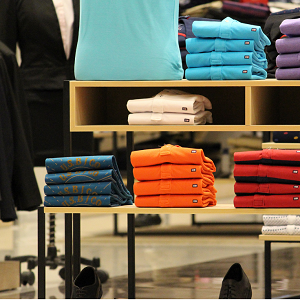
From Vanity Sizing to True Size Inclusivity: Solving Online Fit
Online apparel shopping can feel like navigating a maze of inconsistencies. The confusion around sizing—what one brand calls "medium," another might label "large"—leads directly to significant online shopping difficulties. Shoppers face frustration from unreliable sizing charts, driving high return rates and customer dissatisfaction.
Vanity Sizing: A Brief History
Vanity sizing began decades ago as brands started adjusting garment sizes downward to appeal to consumer psychology, making customers feel slimmer or smaller than they actually were. According to an article in Forbes titled "The Absurdity of Women’s Clothing Sizes, in One Chart", vanity sizing has significantly distorted apparel sizing standards over the years, directly contributing to today's widespread inconsistencies. Our previous exploration of standard apparel sizing reveals how sizing standards initially emerged for mass production purposes but became inconsistent as brands adopted vanity sizing strategies. Similarly, our in-depth review of women's clothing sizes highlights how garment sizing has historically shifted, reflecting societal changes and marketing strategies rather than actual body measurement standards. These shifts have profoundly eroded consumer trust, leaving shoppers uncertain about their true size and complicating the online apparel shopping experience.
The Rise of Plus Sizes and the Emergence of "Midsize"
The traditional "straight size" range typically stops around a U.S. size 12, pushing anything beyond this into "plus size." But as a Business of Fashion article highlights, what is considered plus sizings has evolved. Today, "midsize"—roughly sizes 10-16—has emerged as a distinct segment, often underserved by standard and plus-size collections alike. Midsize shoppers often find themselves in a difficult position, as they are not adequately represented or supported by traditional retail sizing models.
|
Size Category |
Typical US Size Range |
|
Straight Size |
0 - 12 |
|
Midsize |
10 - 16 |
|
Plus Size |
14 and above |
Inclusive Sizing: A Retail Revolution
Today's progressive retailers are pivoting toward true size inclusivity, serving customers from XXS to 6XL and beyond. A recent Fashion Dive report underscores the importance of genuine size inclusivity—not merely extending size ranges but thoughtfully designing garments that flatter diverse body shapes. Properly executed inclusive sizing can increase customer loyalty and significantly boost conversion rates by addressing the specific needs of all shoppers.
Solving Online Shopping Issues with AI-Driven Sizing
The biggest hurdle with inclusive sizing remains fit accuracy. Traditional size charts can't adequately address variations in body shapes, leading to high return rates and lost sales opportunities. Another significant issue is size inconsistency across brands. A shopper might wear a size 8 in one brand and a size 12 in another, even when their body hasn't changed. This inconsistency forces consumers to guess their size for each new brand they try—contributing to confusion, dissatisfaction, and frequent returns.
Modern brands now leverage AI-driven solutions like Bold Metrics’ Smart Size Chart, a solution that uses minimal customer data inputs (height, weight, age, etc.) to deliver highly personalized sizing recommendations that account for both garment-specific fit and individual body shape.
A recent Bold Metrics case study highlighted how one inclusive apparel brand successfully deployed AI sizing solutions, achieving impressive results:
These advancements represent a significant leap forward from traditional sizing methods, driving not only better consumer experiences but also measurable business improvements.
The Business Impact of Inclusive Sizing
Brands investing in inclusive sizing technology don't merely enhance customer experience—they directly boost profitability. As highlighted in Forbes, reducing returns through better sizing is crucial, as apparel sees higher return rates than nearly any other online shopping category. Beyond reducing logistical and environmental costs associated with returns, brands using AI-driven fit personalization experience greater customer satisfaction and loyalty.
Visualizing Inclusivity
Brands investing in inclusive sizing technology don't merely enhance customer experience—they directly boost profitability. As highlighted in Forbes, reducing returns through better sizing is crucial, as apparel sees higher return rates than nearly any other online shopping category. Beyond reducing logistical and environmental costs associated with returns, brands using AI-driven fit personalization experience greater customer satisfaction and loyalty.
Conclusion: Toward a Size-Inclusive Future
The journey from vanity sizing to size inclusivity is fundamentally about meeting customers where they are. Today’s shoppers demand transparency, accuracy, and inclusivity in sizing. Brands embracing this with innovative technology, such as AI sizing platforms like Bold Metrics, are setting new industry standards and reaping significant rewards.
True inclusivity goes beyond adding more sizes; it's about accurately and thoughtfully serving every customer with solutions that drive both consumer satisfaction and measurable business results.
Brands that prioritize data-driven sizing are capturing more revenue, improving operational efficiency, and building long-term loyalty in a competitive retail environment. The future of apparel is inclusive, predictive, and personalized. The brands that lead with fit will lead the market.


.png?width=600&height=408&name=march%202023%20-%20french%20toast%20(1).png)

.png?width=1080&height=1080&name=Bold%20Metrics%E2%80%99%20digital%20twin%20technology%20helps%20some%20of%20the%20worlds%20biggest%20bands%20increase%20conversion%20and%20AOV%2c%20reduce%20returns%2c%20optimize%20their%20customer%20experience%2c%20and%20boost%20brand%20loyalty.%20(2).png)






